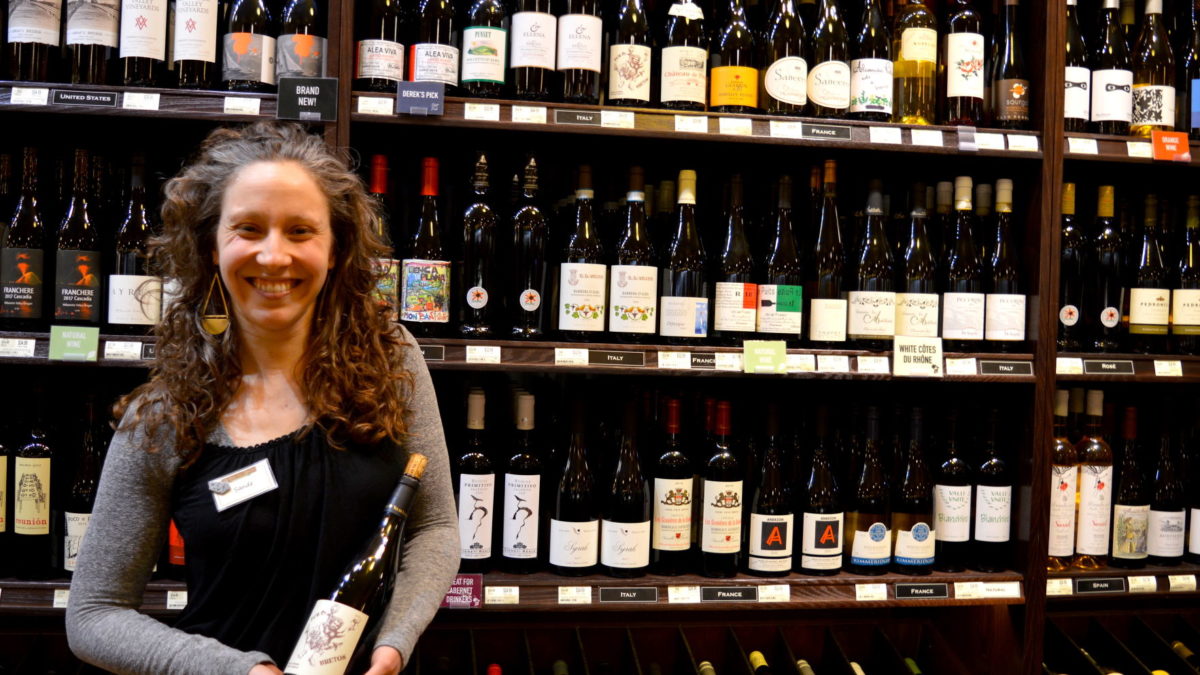I’ve always been intrigued by people who really geek out about wine.
In large part, because I have never been one of those people. I never got the allure of swirling a goblet and dunking my nose in fermented grapes. I don’t pick up on sweet notes of cardamom, pear and whatever else gets infused. I do know that a good bottle of white pairs well with chicken and fish and that you should reserve a bottle of red for beef, lamb or your favorite chocolate.
But here’s the thing. I didn’t know what a good bottle of red or white looks like. You would think the pricier the better, but again wrong. I thought names like Santa Margherita and Francis Coppola meant I was living the high life at the dinner table, but after last Friday, I never knew just how wrong I was about the stuff.
This Sunday kicks off the Opening Corks ceremony of Philly Wine Week, the annual homage to all things vino. There will be hundreds of winemakers, sommeliers and restaurateurs celebrating a scheduled week of education, diversity and of course sampling copious amounts of wine all across the Greater Philadelphia Region.
I was intrigued by the event after reading a piece in Punch last year on Jill Weber, owner and wine director of Jet Wine Bar (1525 South St.), home to some of the most eclectic bottles of wine in the city. The takeaway from the story was less about the wines she showcases from regions like Turkey, Hungary and Macedonia, and more about how her dual career as an archeologist has taken Weber to some of the world’s most intense places – and yes, in most she has tried the wine.
Weber was one of four stops I made last Friday, on a mini wine tour. By the end of it, I was surprised I was able to hold a camera and take a quality photo. But in addition to feeling pretty good by the end of the night, I had amassed so much knowledge about what good wine really looks and tastes like and why the current laws in Pennsylvania hinder many stores, bars and restaurants from providing Philadelphians with more rare finds.
My first stop was the flagship location of DiBruno Bros. (1730 Chestnut St.) in Rittenhouse Square. What’s special about DiBruno’s beverage program is that it prides itself on having bottles you can’t readily find in state-run liquor stores in Pennsylvania. What’s also special is the opportunity of getting educated by Sande Friedman, who heads the wine and beer program for DiBruno Bros. While she’s responsible for both beverages, it was apparent after the first 30 seconds that wine is Friedman’s passion and my ass was about to get schooled.
She brought out a pair of wines from the Loire Valley region of central France, which Friedman referred to as the “Garden of Eden” for table grapes. In front of me was a cheese spread and Sancerre ($39.99) – which is basically a really, really fresh tasting Sauvignon Blanc. Also offered was a Chateau de Fleurie Beaujolais ($29.99) and a natural red called Pur Breton ($49.99), which is truly for finer palates than mine.
“We are doing the Loire Valley, because you are in a cheese store,” Friedman said, pointing to a cold stone plate of various cheeses topped with honey. “We get a lot of people who come in all the time and they have the preconceived notion of, ‘If I’m having a soft cheese I need white wine,’ when actually red wine and goat cheese is actually really delicious together. People often think red wine is just for meat. Not true and I think these two [bottles of red] will prove that.”
Over the course of the discussion, Friedman schooled me on the intricacies of thermo-regulated tank systems, how the rainfall in the Loire Valley is excellent for harvesting all kinds of grapes, how soil rich in granite is great for drainage and not spoiling a grape, and how there is a big difference between an organic wine and what’s deemed a natural wine. You know, all the customary things we all think about while polishing off a bottle over a Netflix documentary most nights.
“Most of the wines you get at PLCB stores are OK, but those wines add sugar to intensify the alcohol,” said Friedman. “We source more natural wines that don’t do that as much. We’re all about what I call ‘minimal intervention’ wines here, that’s how we approach food and a lot of our cheese at DiBruno’s. We don’t want it filled with a bunch of junk and crap to make it taste a certain way.”
If I thought Friedman was an honors course in wine, my next stop with Weber was a veritable AP course in the history of the stuff over the years. Over bottles of Hungarian white and Turkish reds, we discussed how wine has evolved in more landlocked countries and how rulers over centuries have laid the foundation of a table grape.
For example, this is an actual bit about a particular bottle which hails from Macedonia.
Jill: “This particular wine comes from a kingdom of North Macedonia that was agreed upon by the Greeks and the Macedonians in 2018. I mean, we’re talking about the people who are still arguing about who gets to claim Alexander the Great. How so? Because Alexander’s father Philip II, was the ruler of Macedonia. But at the time was Macedonia Greece? Was it Greece-ish?”
Me (mouth on glass): “Oh, word? Wow, that’s crazy.”
Clearly more cultured than the wide-eyed, slightly buzzed journalist sitting across from her, I wanted to gauge her thoughts on local wines. In my mind, I figured someone this worldly couldn’t possibly think that local wines from Pennsylvania and New Jersey have any value after tasting vino from the soils of empires you’ve read about in history books.
That was when I, yet again that night, guessed wrong.
“Oh, I love them,” Weber said. “ I think some of the wineries in New Jersey and Pennsylvania are doing a great job representing the local scene. But I’d even take it a step further and say that there are some wines made in parts of this country that are outstanding. Indiana? Great wine state. Parts of Michigan, Texas, Vermont and Florida are all making wines that hold up to some of the best regions of the world.”
Someone who might disagree with Weber arrived at my next stop — Chloe Grigri, owner of Good King Tavern (614. S. 7th St.). As one could surmise from a name as exotic as hers, Grigri is a lover of all things imported. Grigri took me back to the Loire Valley and to other regions of France through a couple glasses of Chenin Blanc. Although, perhaps the wine of the night that she poured was a white from South Africa, called Mother Rock.
“I could die with this bottle,” said Grigri, clutching the bottle as she spoke. “We’ve had this winemaker come and do a tasting for us and he’s just the best guy. He was so reserved but knowledgeable and passionate about wine making. He’s not a chemist, he’s just a farmer with a beautiful family.”
––
“It’s really fucking stupid, if I’m being completely honest. Not only are you limited to what you can find, but we’re paying the same as what someone would pay if what we offered was in a PLCB store. I would love to buy at a cheaper rate and pass the savings completely over to my customers, it’s just not realistic for any restaurant owner.”
– Chloe Grigri, owner Good King Tavern on the bureaucracy of sourcing wines through Pennsylvania’s Liquor Control Board
––
Grigri told me that she’d love to provide more rare finds like Mother Rock but the Pennsylvania Liquor Control Board keeps close wraps on what restaurateurs, like Grigri, can offer her customers. Right now, anyone that purchases wine wholesale in Pennsylvania has to choose their desired wine from a list or work with a vendor who acts as a middleman to get the precious bottles. Grigri also explained that the misconception from customers comes from the markup of wines, but that purchasers too are paying retail prices for bottles that customers can’t buy in state stores.
“It’s really fucking stupid, if I’m being completely honest,” said Grigri, who noted beforehand she’d do her utmost not to swear over the course of our interview. “Not only are you limited to what you can find, but we’re paying the same as what someone would pay if what we offered was in a PLCB store. I would love to buy at a cheaper rate and pass the savings completely over to my customers, but it’s just not realistic for any restaurant owner. We [as restaurant owners] have voiced our concerns to the PLCB, but nothing changes. Plus, even to get an answer back from them is so slow moving. It’s almost like it’s done by design.”
At Jamonera, manager Adam Elliott said much of the same.
“It certainly makes for a challenge,” Elliott said, the final professor of my wine edification. Elliott, who knows essentially everything there is to know about Sherry, put it in this context. “Let’s say I travel to find a great Sherry and I want to bring it back for our customers. You’d think make an agreement with the maker, register it with the PLCB and serve it up, right? It should be that easy, but there’s so much bureaucracy that it’s nearly the exact opposite. It sucks, and at the end of the day, [the current laws] really hamstring our customers, who would love to have a conversation with us about it.”
However, it didn’t appear as if Elliott from Jamonera had a hard time sourcing Sherry, which isn’t Sherry unless it comes from what’s known as the Sherry Triangle, a region of Spain within the province of Cádiz. This last stop of the night once again showed my limited wine knowledge for thinking that Sherries are primarily aperitifs, something older people sip when they want to have a drink.
Nothing that was served – and shoutout to Elliott, who served up a lot – tasted like Grandma’s dusty ass bottle of Sherry in the dining room cabinet. From super sweet dessert feels like Moscatel to a more smoky, savory selection known as Oloroso, I was surprised at just how close sipping wine (some with an ABV well over 20%) came to real a feeling of sipping a great cognac.
“Quality sherry comes from towns that are close to the ocean, and usually bask consistently in temperatures around 71 degrees,” Elliott said. “The soil is clear in a way that it almost has this interesting relationship with champagne. It’s relative horizons are places here [in the U.S.] like Sonoma and Napa. So these are grapes that really are receiving the best of the best from three little Spanish seaside towns.”
In addition to realizing that calling a ride share was the only thing on the agenda after that final stop at Jamonera, I left realizing that wine takes a backseat to the craft beer boom that has blanketed our working class city. It’s so easy to cozy up with a six-pack from your favorite local brewery, because there’s so many of them. What I’d honestly urge drinkers to do is a little outside the box thinking. And after meeting and chatting with these four encyclopedias, I’m feeling pretty positive that Philly Wine Week is a good place to start.
Now, please excuse me as I go pour myself a Baumard Quartes de Chaume Chenin Blanc Savennieres from the Loire Valley. Translation? A white wine from Central France that pairs well with goat cheese and a single drop of honey.
Philly Wine Week | April 1-7. Times, locations vary. phillywineweek.org/
TWITTER: @SPRTSWTR





